Your Next Epic Road Trip Ends With an Arctic Swim
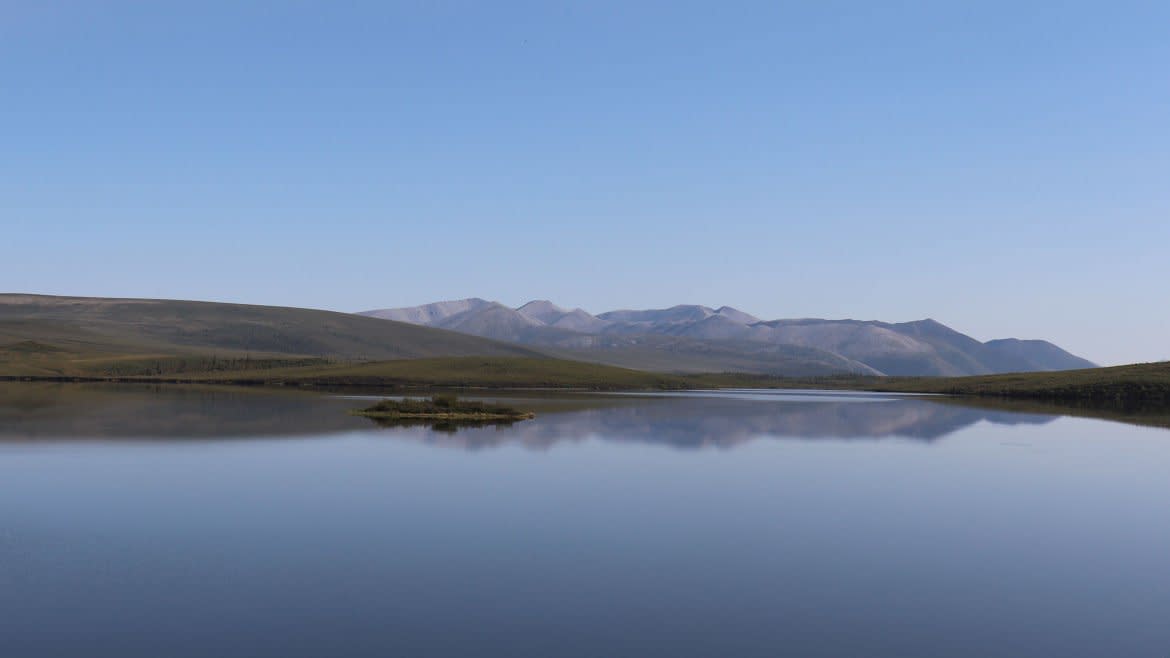
I’ve never been much of a one for gimmicks—staying up past my preferred bedtime, for instance, to watch a tacky looking mechanical ball “drop” in New York City on New Year’s Eve has always had limited appeal. But when it was first floated to me to spend midnight on the summer solstice at the actual Arctic Circle, where the sun would still be high in the sky, I was intrigued.
What would I do with those extra hours of daylight at that time of night? Not important. But the scenario proved irresistible.
Plus, the road trip through Canada’s Yukon and Northwest Territories would end at the actual Arctic Ocean, where I’d have the chance to go for a dip. Along the way, there would be hikes in the spectacular Tombstone Territorial Park, drinking in the famed Dawson City, and a not-so-eagerly anticipated opportunity to run into one of the territory’s thousands of grizzly bears.
The trip was so different, so, well, remote (and, because it was Canada, so nice in multiple ways) that it was a no-brainer for our popular series at Beast Travel—It’s Still a Big World, our twice-a-month feature on an underrated destination.
And, boy, is ‘big’ the word that always surges forward in my mind while driving the vast expanse of Canada. The Yukon, where the core of my trip took place, is the Canadian province above British Columbia and directly east of northern Alaska. It became famous in the late 19th century for the Klondike Gold Rush.
Overnight in 1896-97, this remote and treacherous domain of First Nations people, fur traders, and prospectors was transformed by the 100,000 gold rushers who hoped to find treasure. Some 30,000 to 40,00 eventually made it to Dawson City to get a piece of the action. As with many gold discoveries, by the time most got there, the best claims were gone and those who actually got rich were the ones supplying the adventurers (the gold rush in the Yukon and later Alaska were great for Seattle’s development).
The rush brought one of the greatest of American writers, Jack London, to test his mettle in the frontier forge. Two of his most iconic works—The Call of the Wild and White Fang—take place up here. On a whim, I bought an anthology in a store to read them for the first time since I was a teen and must admit I spent half a day (they’re short) alternately laughing, crying, and cheering as only a dog owner can. But I also gained an appreciation, especially from some of the other short stories, for just how brutal the Yukon was for man and beast. The other strange thing about London and the Yukon is that really the only consistent tourists one sees from far-off places are Germans, as it turns out London’s writings on the Yukon are often required reading in many German schools.
My trip began by flying into Whitehorse, Yukon’s capital city of 25,000 people. It was surprisingly easy to get there from Denver (with a short layover in Vancouver). While it felt pretty far north as we inched our way up latitudinally on the plane map, we were actually near the bottom of the territory and 300-plus miles from Dawson City, which was still another 250 miles from the Arctic Circle, and another 300-plus miles to the Arctic Ocean!
Whitehorse is a relatively new city (its growth came after World War II with the Alaska Highway and the capital of the territory being moved there) with most of its appeal being access to a variety of outdoor activities. Roughly 60 percent of the territory’s population resides here, so while it’s no slouch in terms of decent places to stay—for what I’d consider a real “Canadian” home at the Hidden Valley Bed & Breakfast outside of town—and eat, but I couldn’t wait to start the drive to fabled Dawson City along the Klondike Highway.
The four-hour drive is typical Canada—think miles of dark royal blue lakes ringed by pine trees with a mountain fringe right out of a Bierstadt landscape. The most interesting place to stop is at the Five Finger Rapids, a series of rock islands at a bend in the Yukon River that bedeviled travelers (London writes about them). But the well-maintained trails from the highway down to the islets make for a nice opportunity to stretch your legs.
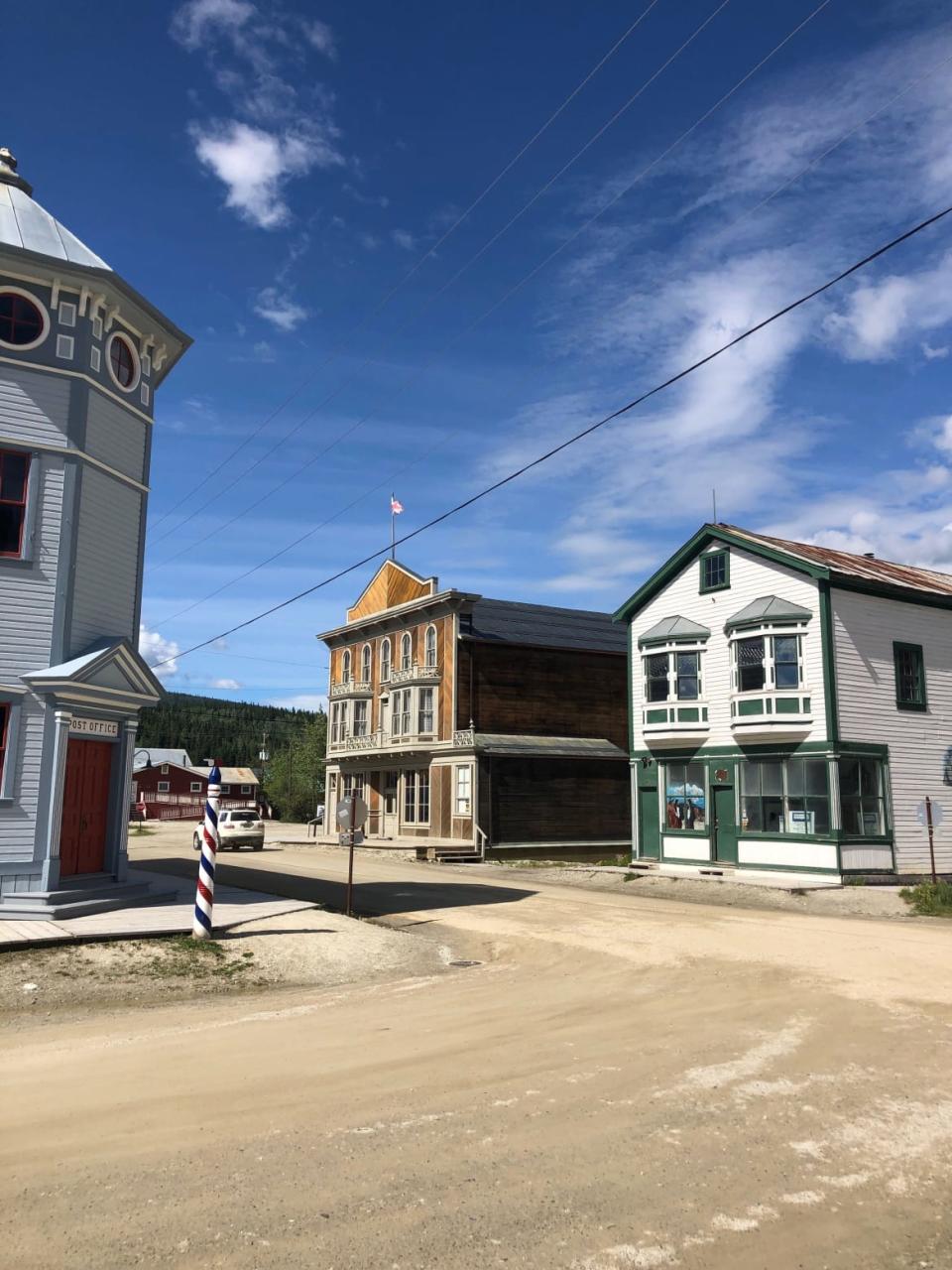
Rolling into the dusty dirt roads of the historic frontier town Dawson a couple hours later might feel a little Westworld-y were it not for the florid overweight tourists in neon athleisure marring the movie-set quality to the town. Amazingly, this little town has held on for more than a century since its boom during the gold rush, surviving both debilitating natural obstacles (winter, duh, but also a lack of sustainable food sources) and changes in the gold industry. Now about 1,500 people call it home.
At first, one is tempted to see Dawson, which sits at the junction of the Yukon and Klondike Rivers, as pure kitsch. After all, gold rush towns with wooden frontier-style buildings like this are more prevalent in theme parks (or ghost town attractions) than they are in the extant urban fabric of the Americas. But if one thinks of Dawson more in the family of historic preserved colonial towns and villages on the East Coast that have been continuously lived in and draw on that history, it takes on a whole new vibe and I think is more easily appreciated.
Don’t get me wrong, though, there is kitsch. The burlesque show at Diamond Tooth Gertie’s is pure kitsch, and nowadays (much like those colonial towns) Dawson is heavily geared to tourism. But I found myself surprised at how not contrived it all felt, as well as relieved that my first time here was at a time of modern medicine and not in 1898 with thousands of starving and diseased drunks in a slapdash town. (Actually, I would have loved to have seen it then, but somehow bring modern antibiotics back with me.)
While in Dawson we stayed just past the ferry dock in the shadow of the Midnight Dome at the Whitehouse Cabins, which were a necessary dark refuge from the unrelenting sunlight. Before this trip, I could never have imagined such a thing as a place with too much sunshine, but when you’re leaving a restaurant at 8:30 p.m. and the sun is beating down on you like it’s midday, you realize there is.
Dawson is also next door to another big reason I wanted to come to the Yukon—Tombstone Territorial Park.
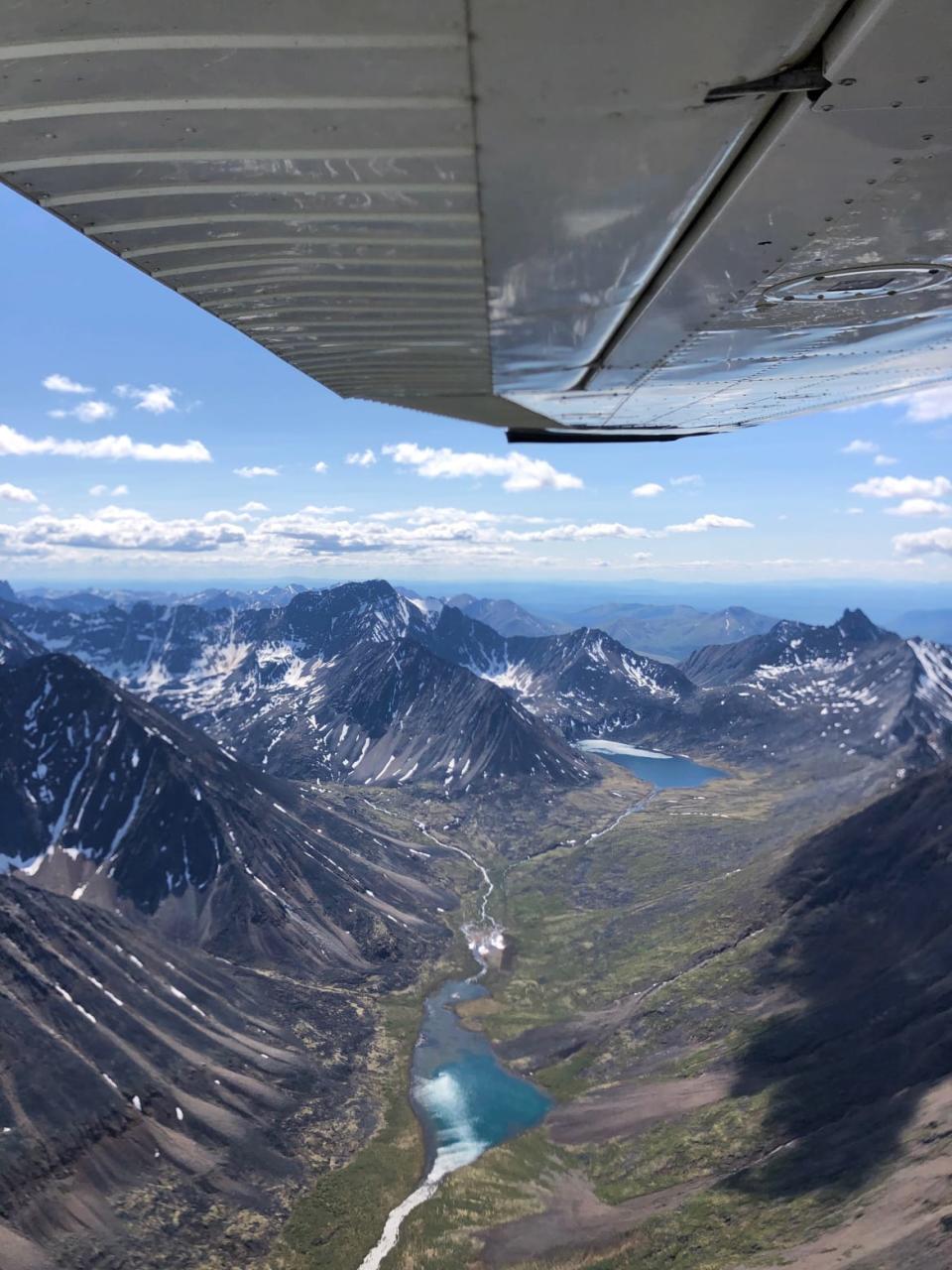
Our first foray was actually from above, as a two-hour trip had been arranged in a Cessna with Great River Air. I hadn’t been in a small plane since a terrifying incident a few years back on Cape Air, so I was a little nervous. I made the mistake of eating my fear away at Cheechako’s Bakeshop (if you go to Dawson, Cheechako’s pastries and sandwiches are fantastic and would be my go-to in any city) only to be halfway through the plane ride and overwhelmed by the feeling I might fill our tiny cabin with regurgitated remains of my meal.
As to the mountains themselves, it was like soaring above Mordor if spring had arrived. The peaks themselves have this charred hellish look to them, but they drop into verdant valleys decorated with gleaming lakes. Shortly after takeoff and before landing, however, a different dramatic landscape comes into view. A century of surface gold mining has irrevocably altered some valleys, leaving behind miles of ant farm-esque dirt snake mounds and golf course lagoons.
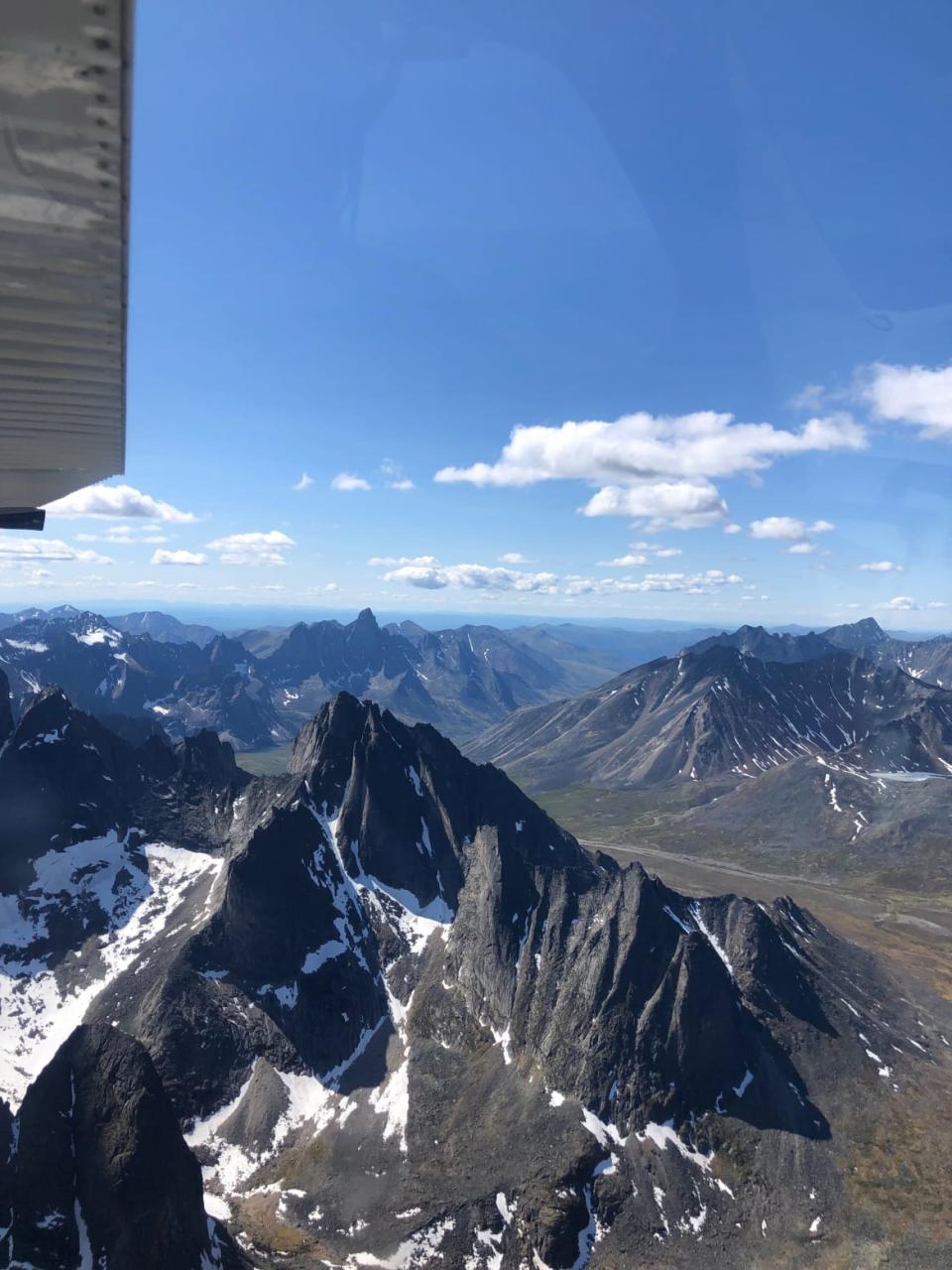
The following day, we drove into the park to hike with the Klondike Experience. We did the Grizzly Ridge trail, a moderate hike that is “popular” for out here (i.e. you might see three or four people) but gives you views of Mount Monolith and Grizzly Lake at the summit. Afterwards, we got a preview of our drive the following day and drove for a bit (spotting both a lynx and a family of moose) to go walking on tundra. It’s a surreal surface, and the best I can describe it is as a mixture of walking on sponge and kale chips.
I have a bit of a lead foot, so I won’t say how long the following day’s 400-kilometer drive on the Dempster Highway, which is supposed to take six or seven hours, took me. The Dempster is dirt and rock, as asphalt wouldn’t survive the weather (nor the melting of the permafrost underneath it that comes with car traffic) and cuts through more epic scenery. There are crystal-clear and ice-cold rivers coursing through it, and reflecting-pool lakes mirroring the mountains in the distance. (Just be prepared for mosquitoes.) That day we were taking it nearly all the way to the border with Northwest Territory, but would be stopping in Eagle Plains for the summer solstice.
There’s only one hotel in Eagle Plains, run that day by a grumpy older woman right out of an inn in the middle of nowhere in a dark fairy tale—one where if you aren’t obsequious enough, you’ll wake up as a different species. Or just have nowhere to stay. Eventually, though, new guest after new guest rolled in, and since they were new-er we no longer occupied the who-is-bothering-me-now space. (By the time I left, I like to think I won her over.) Eagle Plains is about 30 minutes from the line marking the Arctic Circle, so we relaxed, ate, read, ran laps around the hotel for exercise (long distance didn’t appeal given the bears), and read some more, watching the clock slowly tick closer to midnight. There isn’t much to say about the summer solstice at midnight on the Arctic Circle except a couple of things.
One, it’s sunny. And so we opened the champagne even though we were exhausted.
Two, I spent summer solstice on the Arctic Circle under the midnight sun. And that’s that.
After a decent night’s rest (the hotel is actually nice even though they have a captive market) we hit the road for another long dirt drive, but this time nearly all our drive would be in the Arctic Circle, full of wildflower fields that looked like snow and rounded mini-mountains known as pingos, which are created by permafrost pushing up through the earth. We were headed to Inuvik, a small town in Northwest Territory mostly made up of Inuvialuit people. The town has just enough going on (hotels, a pretty good restaurant in Alestine’s, an igloo church, and a massive sports complex that we utilized to work out after the long drive) to make it your base for the area. Done in by the drive and a workout, we filled up at Alestine’s and passed out, excited for the final day.
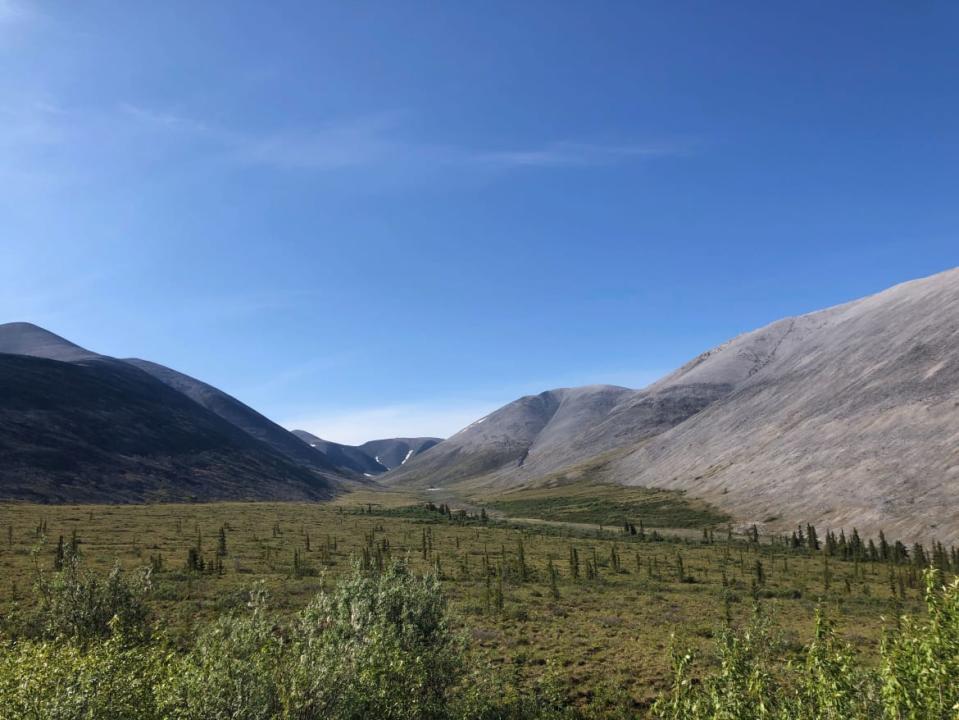
Even further north than Inuvik lies the village of Tuktoyaktuk (better known as Tuk) which was where we were supposed to see the Arctic Ocean and maybe dip our toes in. Now, the Arctic Ocean, at least here, wasn’t exactly the Meditteranean or Gulf of Mexico. It’s sort of sludge-colored, and even without the warning given to us by the local tourist office, it’s pretty clear that it’s rough and could sweep you away if you don’t pick a good spot.
But we didn’t come all this way just to dip our toes in. So, despite forgetting not only bathing suits but towels, we drove to a spot recommended to us and stripped down to our briefs. One after the other, we inched our way out and dove in. (For proof, here.) I won’t lie, it was cold. But not ice-bath cold. Cold would be walking on the windy beach in wet underwear with no towel!
Having swum in four of the five major ocean basins, I got back into our car and we drove back to Inuvik. I won’t lie, the journey back east wasn’t as easy because we were so much further north. Two Air North flights to Whitehorse (a beloved regional airline that had cute service only a regional airline can have), and then Air Canada to Ottawa and on to Washington, D.C. (less cute, but I love going through U.S. border control in Canadian airports as the lines are non-existent).
By the time I got home, the road trip felt like the distant past.
“Remember that time we went to Dawson City?” I wanted to ask. Even the flight home was just another reminder that the world is still an awful big place.
Get our top stories in your inbox every day. Sign up now!
Daily Beast Membership: Beast Inside goes deeper on the stories that matter to you. Learn more.

